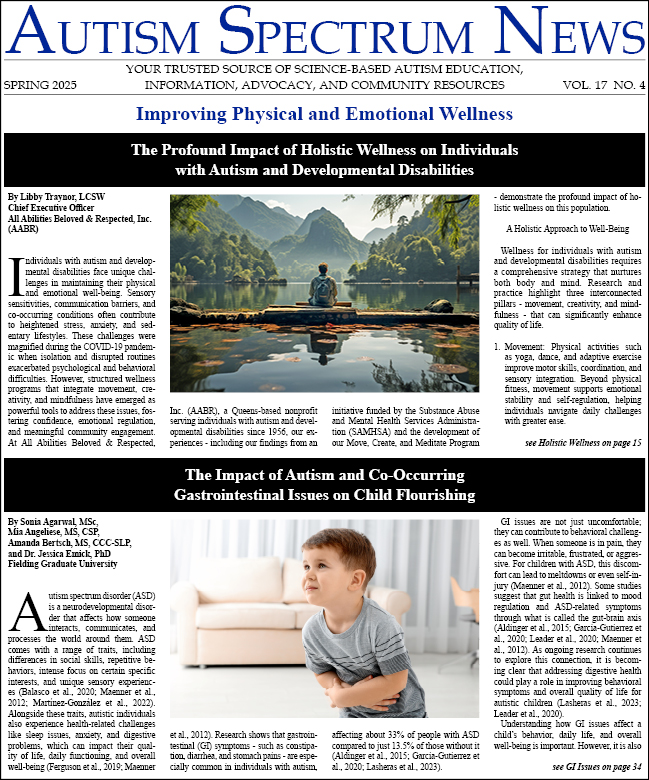-
Online Organizational Software Supporting Care Planning
Organizing the care solutions your family needs can be difficult and stressful. Often, this entails coordinating with medical professionals, behavioral therapists, and child life specialists that advocate with you to remove all obstacles to supporting care. Fortunately, these specialists...
-
What Autistics Can Contribute to Technology
Technology can support autistic people in many ways, but autistic people also have so much to offer in the field of technology. Autistic people with an interest in STEM-related fields (Science, technology, engineering, and mathematics), combined with their natural cognitive and character strengths,...
-
This Is Me: Using a Personalized, Electronic Transition Tool to Support Self-Advocacy in Transition-Aged Young Adults
For young adults with autism spectrum disorders (ASD)1, transition to post-school life brings with it both new opportunities and new challenges. The transition to post-secondary education settings, vocational programs, community-based day programs, and/or supported living means having to teach all...
-
The Scene Cue: A Tool Delivered via Mobile Technology for Improving Independence in Direction-Following
The introduction of visual supports can often augment spoken language comprehension for learners who are minimally verbal. For example, when directing a learner to put a box into a bag, a symbolate sentence strip of “box in bag” (see Figure 1) could improve understanding assuming the learner...
-
Supporting Adolescents with Autism Using Technology to Interact with Peers
Friendships are a vital part of adolescence. Friends provide advice and help with navigating through tough topics. As children grow into adolescence, they begin to rely more on the opinions of friends than parents to make sense of the world. Thus, adolescent friendships are an important resource...
-
Being Smarter with Smarter Tech: YAI Center for Innovation and Engagement
Technology is an essential part of all of our lives. It can have a profound impact, whether allowing us to connect with family; reminding us to take medication; or keeping us safe at home, at work, or on the road. The coronavirus pandemic has only highlighted the centrality of technology for...
-
Autism Prevalence Higher in CDC’s ADDM Network: Improvements Being Made in Identifying Children with Autism Early
One in 44 (2.3%) 8-year-old children have been identified with autism spectrum disorder according to an analysis of 2018 data published today in CDC’s Morbidity and Mortality Weekly Report (MMWR) Surveillance Summaries. This is higher than the previous estimate published in March 2020, which...
-
Developing Confidence and Standing Up for Myself
After I lost my mom to dementia, I had very little confidence in myself. I had no voice. People would express their opinions and I would never tell others my perspective because I had no confidence. I could not stand up for myself. If I tried, I would wind up crying instead. I let myself get...
-
Advancements in Assistive Technology – Using Robots for Therapeutic Interventions
Assistive Technology (AT) is an advancing field that helps individuals with special needs learn, grow, and participate in the community. These devices can take many forms and work at many levels. Robot-Assisted Intervention (RAI) is an advanced form of assisted technology. These tools can help the...
-
Beyond Baby Siblings: Why “Next Gen Sibs” Is Critical to Advancing Autism Research
In the late 1990s, evidence-based research made it clear that autism was heritable and younger siblings of kids with ASD were more likely to become diagnosed themselves. This was a tremendous breakthrough but led to further questions about how to better understand autism recurrence and features...





